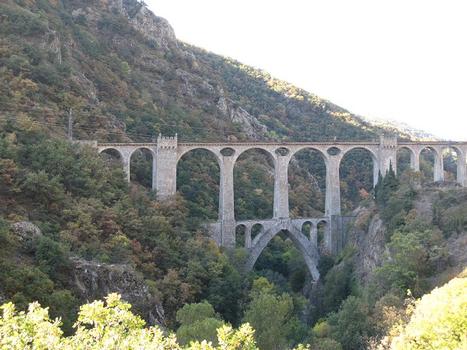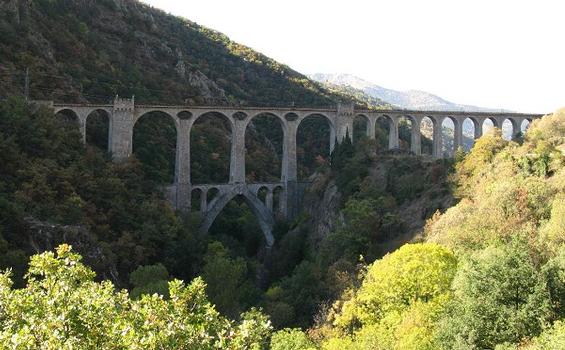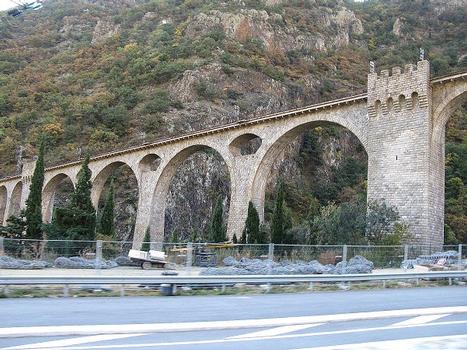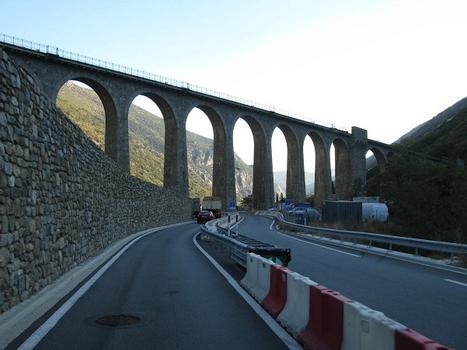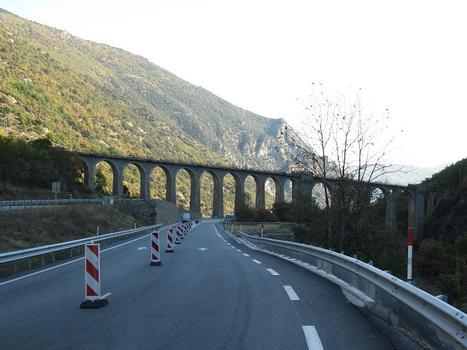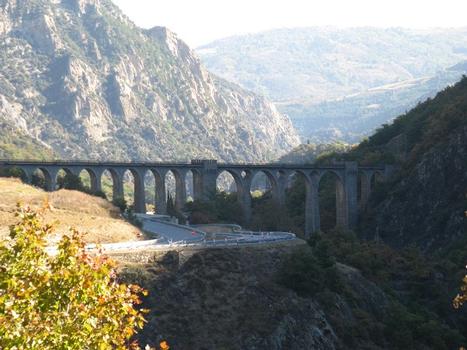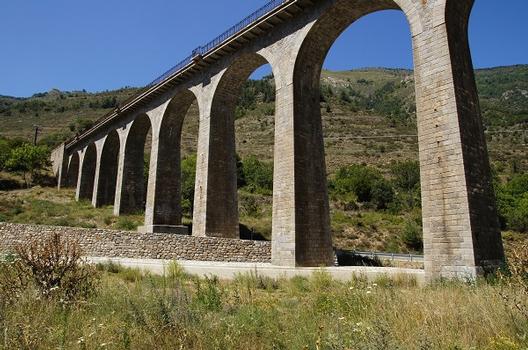General Information
Project Type
| Function / usage: |
Railroad (railway) line |
|---|
Location
| km | Name |
Technical Information
There currently is no technical data available.
Excerpt from Wikipedia
The Ligne de Cerdagne, usually referred to as the Train Jaune (English: Yellow Train, Catalan:Tren Groc), is a 1,000 mm (3 ft 3 3⁄8 in) gauge railway that runs from Villefranche-de-Conflent to Latour-de-Carol-Enveitg in the French Pyrenees. Construction started in 1903 and the section to Mont-Louis was completed in 1910, followed by an extension to Latour-de-Carol in 1927.
It is 63 kilometres (39 mi) long and climbs to 1,593 metres (5,226 ft) at Bolquère-Eyne, the highest railway station in France. The line serves 22 stations, fourteen of which are "request stops" (i.e., the train only stops when specifically requested by passengers). There are 19 tunnels and two bridges, one of which is, unusual for a railway bridge, a suspension bridge. The line is single-track with passing loops at, for example, Mont-Louis and Fontpédrouse-Saint-Thomas-les-Bains.
The trains are powered by electricity at 850 volts DC, supplied by third rail. The power is supplied by hydro-electric generators on the River Têt. The maximum speed of the train is 55 km/h (34 mph). Two types of train are used; ones using modern, entirely closed two-car multiple units and others using old style trailer carriages and powered carriages - most are enclosed but when the weather allows, open carriages are also used. The open carriages allow dramatic views as the train traverses the twisting route and are popular with tourists. Line maintenance vehicles are stored at Villefranche-de-Conflent.
It is named after its yellow and red colours, derived from the Catalan flag. The line was constructed to provide an all-weather route from the high Cerdagne valley to the coast, but the adjacent N116 road has been progressively improved, there has been population loss in the Cerdagne and the rail link is now chiefly a tourist attraction whose long-term future is in doubt.
Electrical discharges
In 1911, railway workers reported a fireball on the third rail between kilometres 28 and 40. A similar phenomenon occurred again when a train was hit by one of these fireballs during a thunderstorm. Lightning rods were installed where these events had occurred and the phenomenon has not been reported since installation.
Text imported from Wikipedia article "Ligne de Cerdagne" and modified on July 22, 2019 according to the CC-BY-SA 4.0 International license.
Participants
Currently there is no information available about persons or companies having participated in this project.
Relevant Web Sites
Relevant Publications
- : Les cent ans du Train Jaune. La Vie du Rail, France (France), ISBN 978-2-915034-88-2, pp. 158.
- (1953): Géographie universelle des Transports [Tome 1]: Géographie des chemins de fer français. La S.N.C.F. [Volume 1]. Chaix, Paris (France), pp. 288-290.
- (1990): Histoire du rail transpyrénéen. La Regordane éditions, Chanac (France), pp. 178-183.
- (1985): Trains de montagne. Presses et éditions ferrovaires, Grenoble (France), pp. 180-186.
- About this
data sheet - Structure-ID
10000837 - Published on:
23/01/2006 - Last updated on:
28/05/2021

